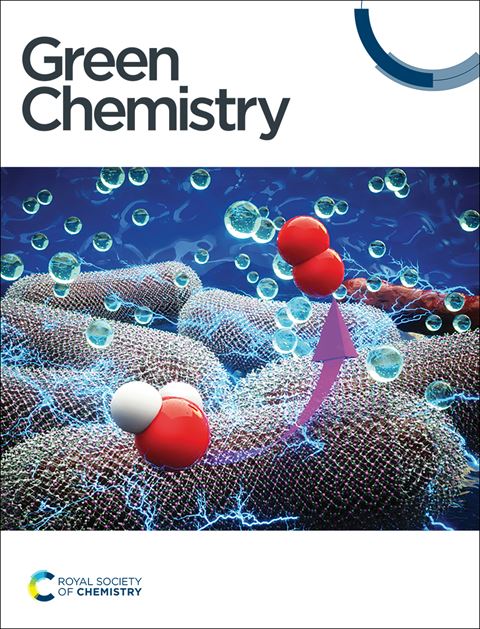串联电催化苯甲醇氧化和醛醇缩合高效生产有价α,β-不饱和酮
IF 9.3
1区 化学
Q1 CHEMISTRY, MULTIDISCIPLINARY
引用次数: 0
摘要
α,β-不饱和酮在有机合成和生命科学中至关重要,通常是通过酮和醛缩合而成的。然而,传统的合成方法涉及高温、高压和使用对环境有害的溶剂,阻碍了可持续发展。本研究通过串联反应一步电合成苄基丙酮和2-亚甲基苯基环己酮,将苄基醇电氧化偶联成相应的醛,然后醛和酮之间缩合醛。苯甲醛的选择性生成是串联反应的关键,并在立方氧化物负载的金催化剂(Au/CuO)作为阳极上实现,显示出吸附苯基醇的能力,并产生活性吸附氧(OH*)进行选择性氧化。串联反应策略在不同取代基的苯甲醇和丙酮/环己酮合成α,β-不饱和酮方面具有通用性。为了验证这一概念,我们构建了一个流动电解槽,并在安培电流下实现了苯并二烯丙酮的连续电合成和氢气生产,苯并二烯丙酮的产率为9.5 mmol h−1,氢气产率为0.4 L h−1。本研究证明了电催化和热催化串联耦合的潜力,对合成更高附加值的化学品具有重要意义。本文章由计算机程序翻译,如有差异,请以英文原文为准。
Tandem electrocatalytic benzylic alcohol oxidation and aldol condensation for efficient valuable α,β-unsaturated ketone production†
α,β-Unsaturated ketones, crucial in organic synthesis and life sciences, are conventionally produced through aldol condensation of ketones and aldehydes. However, traditional synthesis methods involve high temperature, pressure, and the use of environmentally harmful solvents, hindering sustainable development. Herein, we present one-step electrosynthesis of benzylidene acetones and 2-methylenephenyl cyclohexanone via tandem reactions, by coupling electrooxidation of benzylic alcohols to the corresponding aldehyde, followed by aldol condensation between the aldehyde and the ketone. Selective formation of benzaldehydes is key to the tandem reaction and was achieved over a cubic oxide-supported gold catalyst (Au/CuO) as the anode, showing the ability to adsorb benzylic alcohols and generate the active adsorbed oxygen species (OH*) for selective oxidation. The tandem reaction strategy demonstrates its versatility in the synthesis of α,β-unsaturated ketones from benzyl alcohols with different substituents and acetone/cyclohexanone. As proof of concept, we constructed a flow electrolyzer and achieved continuous electrosynthesis of benzylidene acetone coupled with H2 production at ampere-level current, delivering a benzylidene acetone productivity of 9.5 mmol h−1 and a H2 productivity of 0.4 L h−1. This study demonstrates the potential of coupling electrocatalysis and thermocatalysis in tandem, with implications for synthesis of more value-added chemicals.
求助全文
通过发布文献求助,成功后即可免费获取论文全文。
去求助
来源期刊

Green Chemistry
化学-化学综合
CiteScore
16.10
自引率
7.10%
发文量
677
审稿时长
1.4 months
期刊介绍:
Green Chemistry is a journal that provides a unique forum for the publication of innovative research on the development of alternative green and sustainable technologies. The scope of Green Chemistry is based on the definition proposed by Anastas and Warner (Green Chemistry: Theory and Practice, P T Anastas and J C Warner, Oxford University Press, Oxford, 1998), which defines green chemistry as the utilisation of a set of principles that reduces or eliminates the use or generation of hazardous substances in the design, manufacture and application of chemical products. Green Chemistry aims to reduce the environmental impact of the chemical enterprise by developing a technology base that is inherently non-toxic to living things and the environment. The journal welcomes submissions on all aspects of research relating to this endeavor and publishes original and significant cutting-edge research that is likely to be of wide general appeal. For a work to be published, it must present a significant advance in green chemistry, including a comparison with existing methods and a demonstration of advantages over those methods.
 求助内容:
求助内容: 应助结果提醒方式:
应助结果提醒方式:


